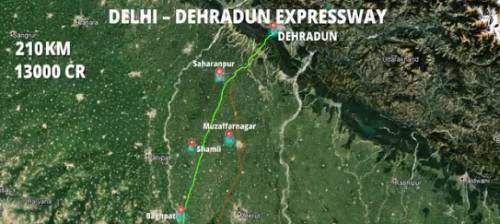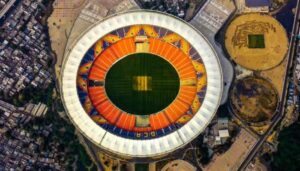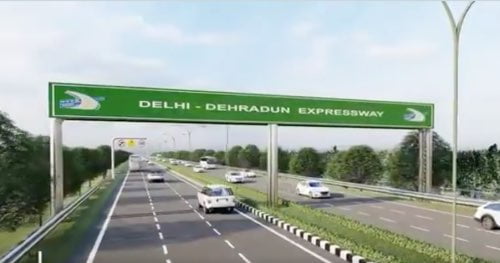Now, travelling from Delhi to Dehradun will become much faster. With the work on the Delhi-Saharanpur-Dehradun Economic corridor progressing, the travel time between the two cities will reduce by almost four hours. This will be the country’s first highway where there will be a 12-kilometre long elevated corridor for protection of wildlife. Union Transport Minister Nitin Gadkari said that his ministry has approved the New Delhi-Dehradun expressway, which will be built with an estimated cost of Rs 13,000 crore.
Here is all you need to know about the Delhi-Dehradun expressway
1) The Delhi-Saharanpur-Dehradun Economic corridor, work on which is underway, will reduce the distance between the two cities from 235 kilometres to 210 kilometres once it is completed.
2) The entire corridor is designed for driving with a minimum of 100 Kmph speed.
3) Wayside amenities every 25-30 km have been provisioned for enhancing the road user experience. Closed toll mechanism would be adopted to enable pay toll only to the extent of highway used.
4) The development of this corridor is expected to boost the economy of the region being served by the highway, especially boosting the tourism in Uttarakhand.
5) For implementation, the entire length from Akshardham (starting point) to Dehradun will be divided into 4 sections.

6) Section 1 is being developed to 6 lanes with 6L service road being in built-up reach, with complete access control and is divided into 2 packages. Pkg 1 falls in Delhi portion in 14.75 km and out of this 6.4 km is elevated. Pkg 2 falls in UP in the length of 16.85 km and out of this 11.2 km is elevated. The tendering process for these two packages has been completed. This section would start from Akshardham Temple near DME and pass through Geeta colony, Khajurikhas, Mandola, etc. The highway also aims to decongest North East Delhi and enhance the development potential of Tronica city and Mandola Vihar Yojana of UP Government.
7) Section 2 is planned 6 lanes, fully access controlled, and the entire length is Greenfield, passing through the districts of Baghpat, Shamli, Muzaffarnagar, and Saharanpur. The DPR is complete and the tendering process has been initiated in four packages. The land acquisition process is going on and the Forest/Environment clearance proposal has been applied for. The target for the project award is March 2021, subject to obtaining environment clearance and substantial land acquisition is in place.
Also Read: New Delhi Railway station to get a ‘world-class makeover’
8) Section 3 starts from Saharanpur bypass and ends at Ganeshpur. The entire length has been recently completed to 4 lanes by NHAI. Necessary underpasses and service roads are being planned to make it fully access controlled to achieve a minimum of 100 kmph speed.
9) Section 4 is planned 6 lanes and is completely access-controlled. This section primarily passes through Reserve Forest in the State of Uttar Pradesh & Uttarakhand. Out of 20 km, 5 km is brownfield expansion, and 15 km is realignment comprising elevated wildlife corridor (12 km) and approaches to the tunnel (structure 340m). ROW is restricted to 25m in general due to Wildlife concerns. Forest and Wildlife clearances have been obtained. The bids in 3 packages have been received and under evaluation. The target is to award the project by March 2021.
10) It has been decided to execute the project under Engineering, Procurement, and Construction (EPC) mode.
In the Union Budget for 2021-22, the Centre has allocated Rs 1.18 lakh crore for the construction of highways. While presenting her third budget, Finance Minister Sitharaman has also mentioned that the execution of flagship highway corridors, as well as projects, would be speeded up.









Unified Pension Scheme (UPS): How it differs from NPS and OPS
India braces for heatwave: Top tips to stay safe in sweltering conditions
Stress managemnt: 10 tips to manage anxiety issues